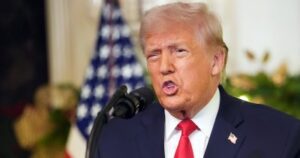17 CONFUSING PHOTOS THAT WILL MAKE YOUR BRAIN HIT THE BRAKES!
The first symptom was so small you almost laughed it off. Then came the nights you couldn’t breathe, the days your hands wouldn’t stop shaking, the quiet…
Check hmmm .. Nice ..:)
Approaching women can be a nerve-wracking experience for many men.However, with the right mindset and approach,it can become an enjoyable and successful endeavor. Here are some techniques…
Jimmy Kimmel Slams Donald Trump as ‘Hateful and Vile’ for Saying Rob Reiner Had ‘Trump Derangement Syndrome’: ‘That Corroded Brain Is in Charge of Our Lives’
In a week defined by a staggering accumulation of tragedy, from a terrorist massacre in Sydney to a campus shooting at an Ivy League university, the American…
The Surprising Psychology Behind Mismatched Coupless!
Contrast couples, where one partner’s physical appearance is significantly different from the other’s, have always sparked curiosity among psychologists and relationship experts alike. These pairs often stand…

Trump Declares Several Nations Want Him as Europe’s Leader
In the arena of global diplomacy, where words are usually measured with surgical precision, President Donald Trump has once again shattered the traditional script. During the White…

Missing teen found trapped inside chimney after 7-year search
Joshua Maddux went out for a walk — and never returned. Years later, his remains were discovered trapped inside a chimney, and the circumstances of his death…

Medical expert shares “very disturbing” take on Donald Trump’s health after “manic” speech
Donald Trump’s address to the nation on Wednesday left many baffled. Not much because of what he said, but the way he presented himself. Now, a top…

NASCAR driver Greg Biffle’s wife sent chilling text to her mom moments before dying in plane crash
A total of seven people, including NASCAR driver Greg Biffle, his wife, Cristina, and two children, died when a private jet crashed in North Carolina on Thursday….

Trump unveils “Patriot Games” with 1 young woman and man from every state and territory set to compete
Next year, America will celebrate its 250th anniversary. According to Trump, it will be “the most spectacular birthday party the world has ever seen.” At the same…

Melania Trump shares intimate phone call with Donald in first film trailer
A year ago, Melania Trump announced that she would have a documentary film made. Now that the trailer is out, it gives an insight into her rather…